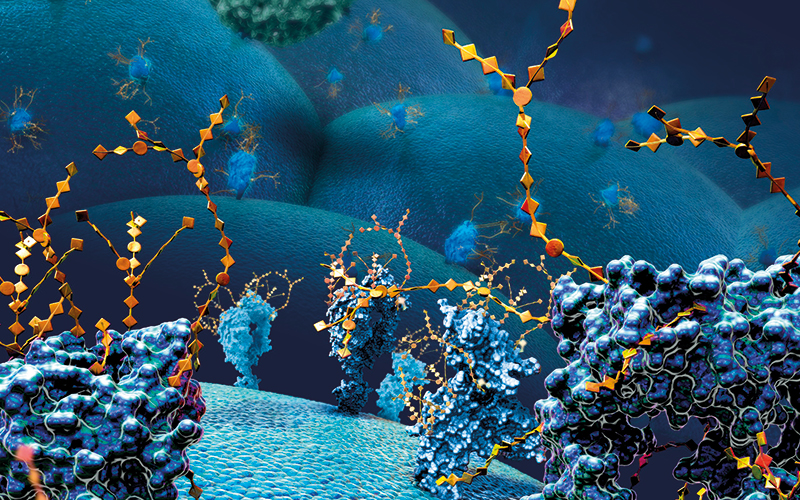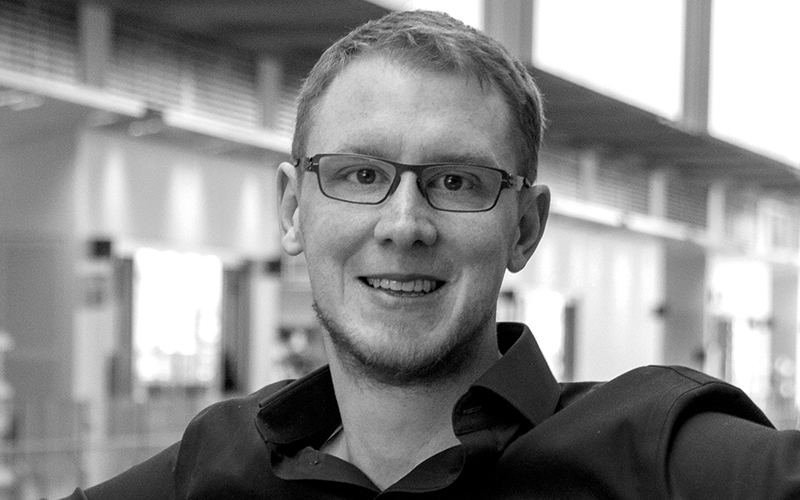Ben Schumann discusses his work and the potential to understand the complex molecular and cellular processes at work in diseases.

Recent decades have seen huge advances in the field of cancer research, but this complex, multifactorial disease remains elusive. Some of the most promising studies have discovered biomarkers with many potential applications, including as diagnostic tools or as a ways to monitor disease progression or predict patients’ response to treatment. “But accurately looking for these biomarkers in the body can be challenging, as scientists need to identify proteins that are uniquely made by diseased or cancerous cells, but are not released by healthy cells”, says Ben Schumann, group leader at The Francis Crick Institute.
Medical and pharmaceutical research has always relied on complex chemical reactions to develop diagnostic tools and therapeutic options – often with ground-breaking results. However, in the last few decades, new frontiers in chemistry have been reached, as scientists have sought to innovate and develop simpler, functional chemical tools with practical applications in other scientific fields.
Developing click reactions
Nowhere was this more evident than at this year’s Nobel Prize Ceremony as the researchers who came up with the concept of “click chemistry” – a new form of reliable chemistry where reactions occur quickly and unwanted by-products are avoided – received the prestigious award.
Ben Schumann’s postdoc with Carolyn R. Bertozzi, one of the Nobel Prize winners, was actually determinant in convincing him that this approach had huge potential to improve our understanding of the complex molecular and cellular processes at work in many diseases.
Carolyn Bertozzi’s contribution involved developing click reactions that work inside living organisms. Known as bioorthogonal reactions, these chemical reactions take place without disrupting the normal chemistry of the cell, and allow scientists to take a closer look, for example at proteins released by and present on the surface of cells.
“I’m hoping our work can be used as a general platform to study which proteins are released by cells”
Ben Schumann’s lab is building on this work to study molecules known as glycans. Located on the outermost layer of every living cell, these carbohydrate molecules are crucial for multiple biological processes as they influence how cells interact. Studies have suggested that altered glycan expression on the surface of cells is a corollary of cancer development, participating in tumour formation.
“Unlike other biomolecules, glycans are not encoded in the genome, but studying them is crucial because they play interesting roles in immunology, diseases like cancer, evolution and infectious disease. For years, innovations have been made to develop chemical tools to tag and study glycans but fundamental issues remain – for example, you could visualise these sugars on the surface of cells and study their structure but not really go into too much specificity about their functions. In our lab, we work to develop new precision tools that allow us to get a better understanding of these molecules and their specificities”, says Schumann.
Tagging proteins
In recent work published in Nature Communications, Schumann and his team developed a new method called bio-orthogonal cell-specific tagging of glycoproteins (BOCTAG). Their objective was to apply the principles of bioorthogonal reactions to tag and identify proteins released by a specific type of cells – cancer cells for example, even when grown in the presence of other cells types.
The method relies on adding bioorthogonal tags to sugars, which are then added to cells. Normally, the chemical tags would render the sugars too big to be used by any cell. However, the team genetically modified the cell type they wanted to study, so that only this cell type has the ability to add the “tagged” sugars to its surface proteins.
When the cells make these proteins, they remain marked with the chemical tag and can thus be easily identified. Schumann and colleagues showed that it was possible to successfully tag glycans from particular cancer cells in multiple cell lines and in mice.
“Almost all proteins on cell surfaces or secreted by a cell can in principle be tagged with our method. This might include proteins made by cancers, which can be difficult to detect with traditional methods such as mass spectrometry,” Schumann points out. This may include a number of glycoproteins that are aberrantly expressed in cancer, such as mucins, some of which are routinely used as diagnostic markers. Identifying new diagnostic markers is challenging because mucins are particularly hard to detect in the bloodstream.
The work conducted by the group can also help to improve the way cancer is modelled and studied in labs around the world. Many experiments to investigate cancer biomarkers focus on only one cell type, which is easier to study but does not exactly reflect the complex interactions that happen in the body.
“The intricate interactions between tumour and host cannot be accurately modelled in a monoculture of tumour-derived cell lines. We need to come up with more complex models and our method allows for that by opening up the possibility to study and to understand cells in co-culture and look precisely at which proteins are released by which cells within a complex environment.”
The group now hopes to test their method to see if it can be useful to track biological processes in other types of diseases and eventually to diagnose them more efficiently.
“Our work has applications beyond cancer biology. I’m hoping it can be used as a general platform to study which proteins are released by cells in the context of immunology or infectious diseases, for example. Click chemistry has transformed many areas of biomedicine, including the ability to screen for adequate molecules within large drug libraries or to look at the targets of a drug within a cell, so it will be very exciting to continue working in this field going forward,” Schumann concludes.
Ben Schumann

- Completed postdoctoral work in the lab of Carolyn R. Bertozzi at Stanford University, developed an interest for “precision tools” to study glycosylation of human cells in great detail.
- Received the Award for Excellence in Glycosciences and the Otto Hahn Medal by the Max Planck Society.
- Started as a Group Leader at the Francis Crick Institute and Imperial College London in 2018.
- The lab has received the 2021 Rita and John Cornforth RSC Horizon Prize in Chemical Biology for their work on chemical precision tools in a large multinational collaboration.
Image credit | Science-Photo-Library
